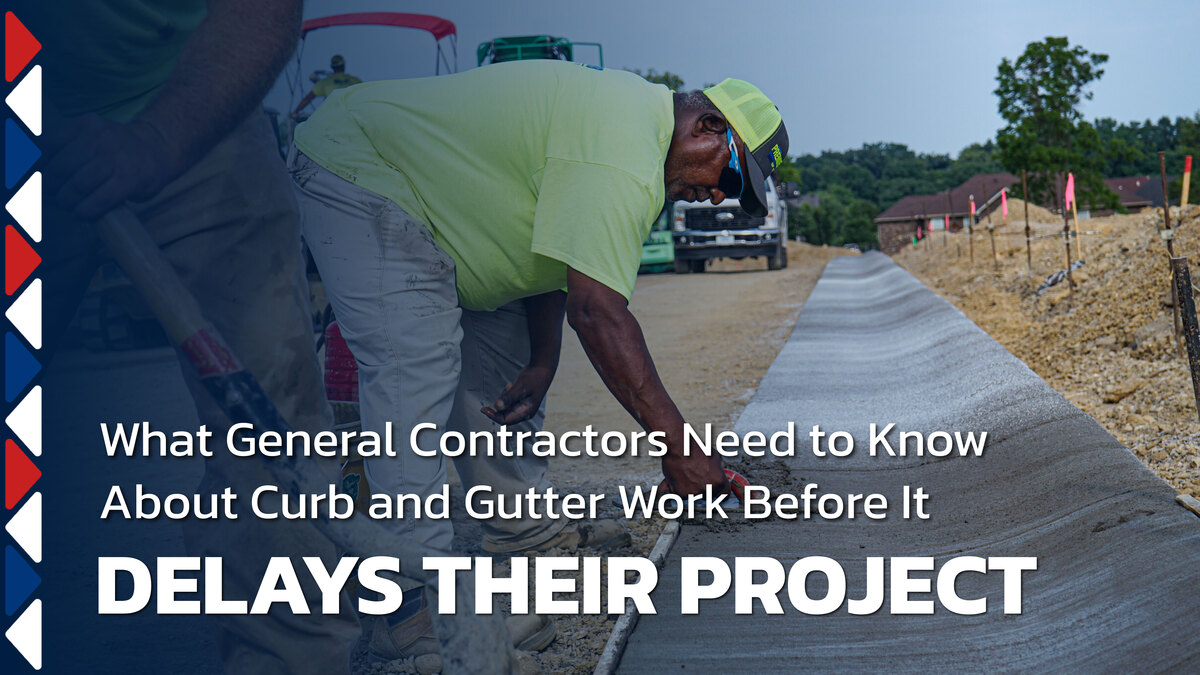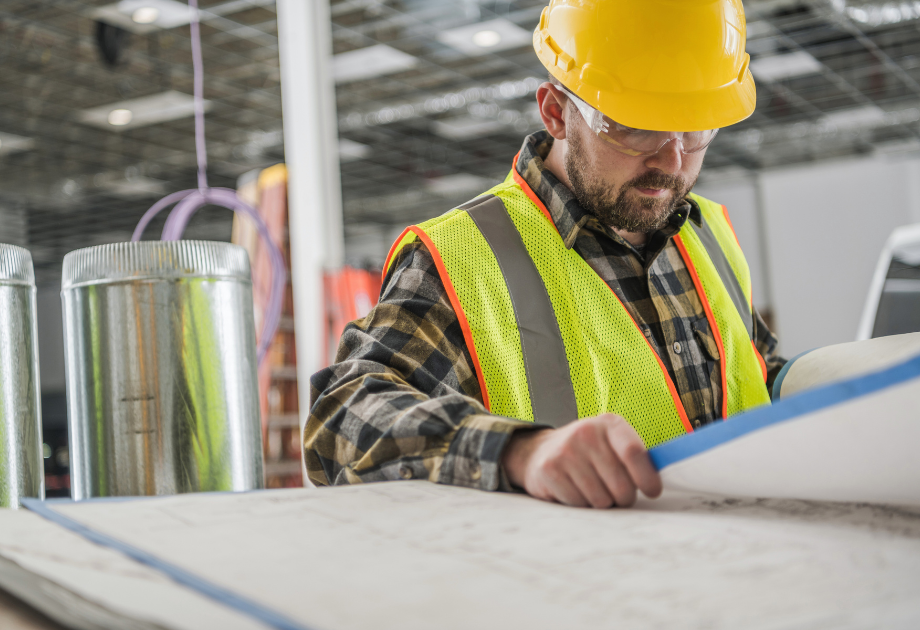What General Contractors Need to Know About Curb and Gutter Work Before It Delays Their Project
What General Contractors Need to Know About Curb and Gutter Work Before It Delays Their Project

It’s 7:00 a.m. The grading crew wrapped yesterday. The paving sub is scheduled for tomorrow. But the curb and gutter team isn’t on site. Your inspector is expecting layout to be pinned and ready for approval, and now everything behind that step is frozen. You’re already starting to reshuffle your schedule—and the day just started.
That’s the reality many general contractors face when curb and gutter work is treated as a checkbox instead of a coordination trigger. This phase looks straightforward on paper, but when it slips even slightly, every downstream task gets pushed. Delays at this point are rarely isolated; they stack, compound, and create friction between trades.
This blog walks through how that happens, what usually causes it, and how to prevent it on your next project.
Why Curb Work Sets the Pace for Everything That Follows
In site development, concrete curb installation isn’t just a matter of forming concrete. It establishes the elevation that surface grading follows. It defines the edge for flatwork pours. It sets the boundaries paving crews depend on to make accurate passes. Gutter sections do more than collect runoff; they carry water into the site’s concrete drainage system, and they must be aligned with flowlines and tied into stormwater controls.
This phase must meet layout tolerances, match survey elevations, comply with ADA slope requirements, and pass inspection before anything else moves forward. Every trade that follows looks to the curb line as a fixed control. If it’s misaligned, incomplete, or late, progress stalls across the board.
Here’s what gets disrupted when curb work doesn’t happen on time:
- Base compaction cannot proceed without elevation confirmation
- Paving crews hold off mobilization or reassign their slot
- Final grading crews lack a reference point for finish work
- Drainage inspection and testing cannot be completed
- ADA ramps may require correction or full rework
Even though this is one of the shortest scheduled phases, its timing affects every major activity that follows.

How One Delay Triggers an Entire Schedule Shift
Here’s what this looks like in practice.
Grading wraps on Friday. Curb layout is scheduled for Monday. But the curb crew is tied up on another job and doesn’t arrive until Wednesday. When they do, layout is rushed. By Thursday, the inspection fails—elevations are inconsistent, and one section exceeds ADA cross-slope limits.
The repour pushes into the following Monday. But your paving crew, originally slotted for Tuesday, moves on to another project. The site sits idle for three days while you wait for their next opening. A forecasted rainstorm rolls in that weekend, saturating the exposed subbase. Now regrading is required before paving can resume.
One misstep at layout led to ten lost days, three trades disrupted, and a compaction test that has to be repeated. None of it was budgeted for, and none of it looked risky in the original schedule.
What Usually Goes Wrong and Why It Matters
Most delays in curb and gutter installation happen for one of three reasons:
- Missing or inaccurate layout: Crews arrive before survey elevations are confirmed, or slope tolerances are off. This causes drainage issues, ADA failures, or misalignment with utility structures.
- Poor formwork or rushed prep: Loose pins, improper rebar placement, or debris in the trench leads to bad concrete finish or structural failure.
- No buffer in the timeline: The pour is scheduled back-to-back with base work or paving, leaving no room to recover from an inspection failure or weather delay.
Each of these creates a need for rework, rescheduling, or field corrections that drag other trades with them. It’s not just a mistake—it becomes a coordination problem that slows the entire site.

How Curb Work Should Actually Be Scheduled
Curb and gutter detail planning should happen early in preconstruction. But installation should only move forward after:
- Initial grading is complete
- Elevations are confirmed by survey
- Drainage flowlines are staked and verified
- Inspection availability is locked in
The pour itself should be scheduled with a buffer. Avoid lining it up the day before paving or the same day as compaction. Field variables happen. A good schedule treats this phase as a trigger, not filler.
For more insight into schedule sequencing, visit A Better Approach to Construction Scheduling.
What to Look for in a Curb Subcontractor Who Respects Your Timeline
A good subcontractor pours concrete. A reliable one protects your schedule.
Here’s what we provide on jobs that stay on track:
- Review of curb and gutter specs before mobilizing
- Coordination with your surveyor to confirm layout and slope
- Built-in communication with inspectors to prevent rework
- Layout methods that meet ADA compliance on the first pass
- Paving team alignment so no one gets held up waiting on a finish
At Premier Curb of Cincinnati, we work with general contractors who expect accountability. Our team doesn’t show up with assumptions, we show up with a plan, a layout crew, and a process that respects your downstream trades.
Work with a Team That Keeps You Moving
You don’t need just another subcontractor who says they can handle the curb pour. You need one who understands how that pour fits into your jobsite sequence, your inspection windows, and your paving crew’s calendar.
Charles H. Hamilton delivers curb and gutter installation that holds the schedule steady, not hostage. Our crews show up with the right layout, meet inspection requirements, and finish with precision, so your next phase can start on time.
If your last job got delayed because of layout issues, failed slope inspections, or a no-show subcontractor, we can help you tighten the timeline and prevent it from happening again.
Contact us today to talk about your next project.

